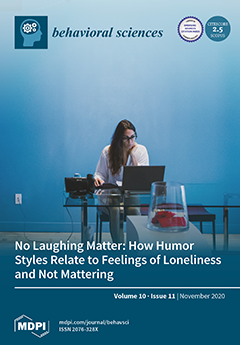The purpose of this study is to examine the relationship between contextual work-related factors in terms of job demands (workload—
WL) and job resources (work flexibility—
WF), work–life conflict (
WLC) and the burnout dimension emotional exhaustion (
EE)
[...] Read more.
The purpose of this study is to examine the relationship between contextual work-related factors in terms of job demands (workload—
WL) and job resources (work flexibility—
WF), work–life conflict (
WLC) and the burnout dimension emotional exhaustion (
EE) in a large population-based sample. Building on the job demands resources model (JDRM), we have developed the hypothesis that
WL has an indirect effect on
EE that is mediated by
WLC. We conducted a secondary analysis using data from the Dresden Burnout Study (DBS,
N = 4246, mean age (SD) = 42.7 years (10.5); 36.4% male). Results from structural equation modelling revealed that
EE is positively associated with
WL (β = 0.15,
p = 0.001) and negatively associated with
WF (β = −0.13,
p = 0.001), also after accounting for potential confounding variables (demography, depressive symptoms, and lifetime diagnosis of burnout). Both effects are mediated by
WLC (
β = 0.18;
p = 0.001 and
β = 0.08;
p = 0.001, respectively) highlighting the important role of
WLC in employee health. In summary,
WF may help to reduce burnout symptoms in employees, whereas
WL may increase them. Study results suggest that both associations depend on
WLC levels.
Full article






